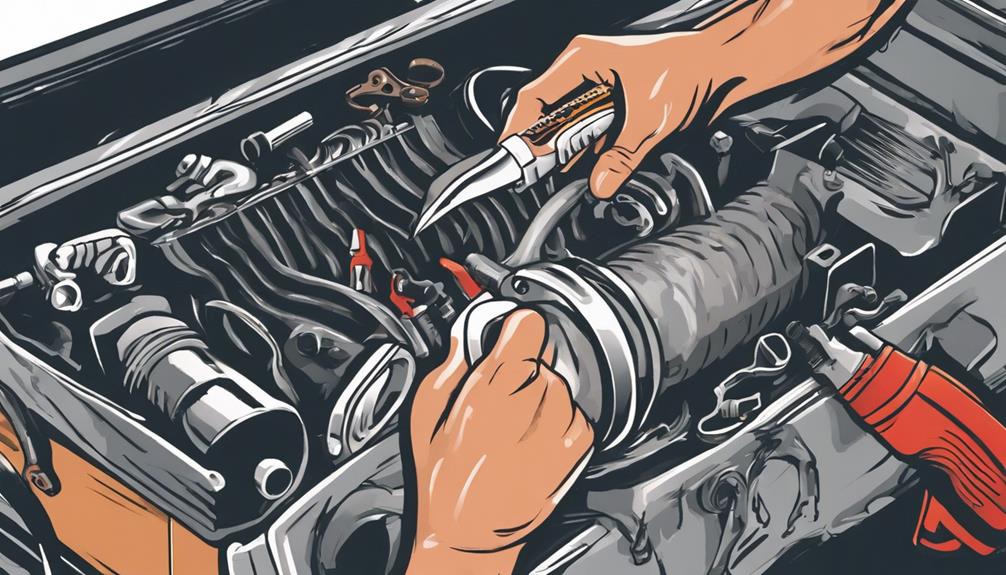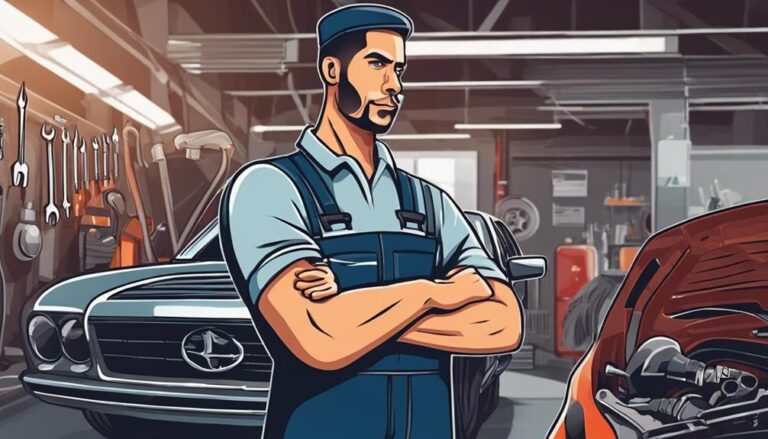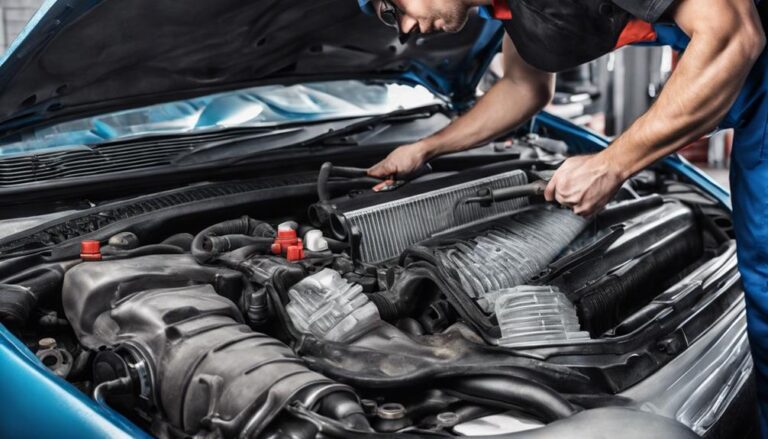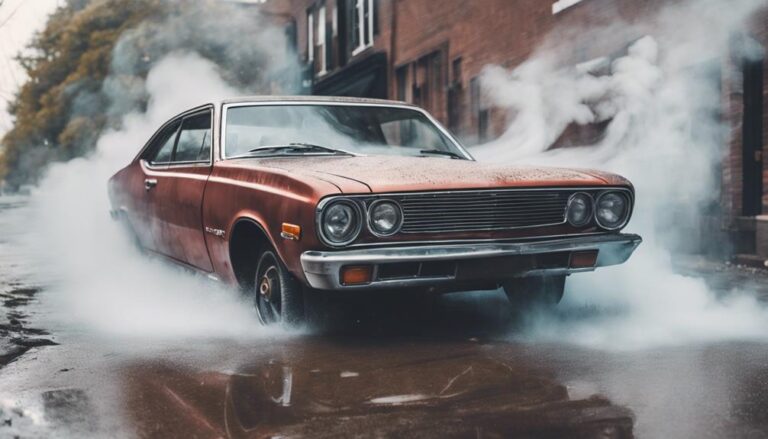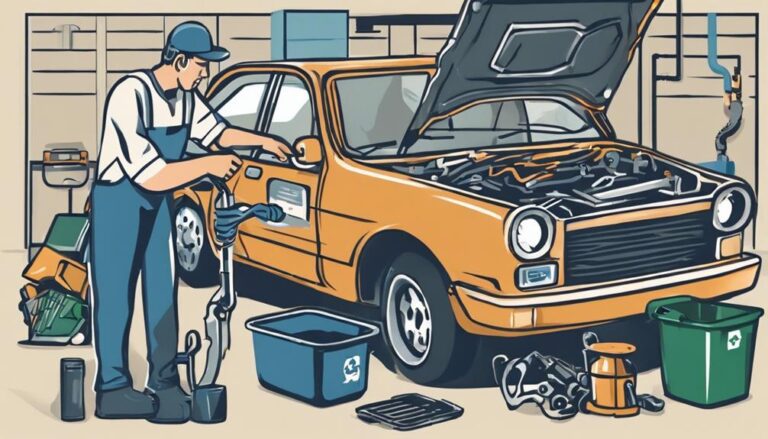Fixing Common Radiator and Hose Issues: A Guide
When it comes to your vehicle's cooling system, common radiator and hose issues can disrupt your smooth drive or signal impending trouble. Understanding these problems and how to address them can save you from unexpected breakdowns and costly repairs.
From mysterious coolant leaks to overheating engines, knowing how to diagnose and fix these issues can keep your car running smoothly. Get ready to tackle these common radiator and hose issues head-on with practical tips and insights that will keep you on the road with confidence.
Key Takeaways
- Regularly inspect hoses and coolant levels to prevent engine damage and overheating.
- Replace radiator hoses every 4 years or 50,000-75,000 miles for optimal performance.
- Trust professional services for expert diagnosis and efficient radiator repairs.
- Maintain proper airflow and cleanliness for radiator longevity and efficiency.
Common Radiator Problems Explained
When facing common radiator problems, it's important to promptly identify and address issues to guarantee ideal vehicle performance. The radiator plays a vital role in maintaining the engine's temperature within an ideal range by circulating coolant through the engine to absorb excess heat. Coolant leaks can lead to engine overheating, potentially causing severe damage. Blockages in the radiator can hinder the flow of coolant, resulting in inefficient cooling. Malfunctioning thermostats and water pumps can disrupt the entire cooling system, leading to overheating and other engine issues.
Regularly inspecting the radiator, hoses, and other components of the cooling system can help prevent these common problems. Look out for leaks, cracks, or signs of wear on the radiator and hoses. Make sure that the thermostat is functioning correctly to regulate the coolant flow. Additionally, check the water pump for any signs of malfunction that could impede the coolant circulation. By addressing these issues promptly, you can avoid costly repairs and keep your vehicle running smoothly.
DIY Radiator Troubleshooting Tips
To effectively troubleshoot radiator issues on your vehicle, begin by checking the coolant levels regularly to guarantee top cooling system functionality. When troubleshooting radiator problems, remember to inspect hoses for leaks, cracks, or bulges that could affect coolant flow.
Additionally, check the radiator cap for any signs of wear or damage, as it plays an important role in maintaining the correct pressure within the system. Keep an eye on the temperature gauge to make sure your engine isn't overheating due to a faulty thermostat or a malfunctioning radiator fan.
Addressing radiator leaks promptly is essential to prevent coolant loss and maintain proper engine cooling. Regular maintenance of your thermostat housing and ensuring efficient coolant flow are key steps in preventing potential engine damage.
Stay proactive in identifying and resolving radiator issues to keep your vehicle running smoothly.
Radiator Maintenance Guide
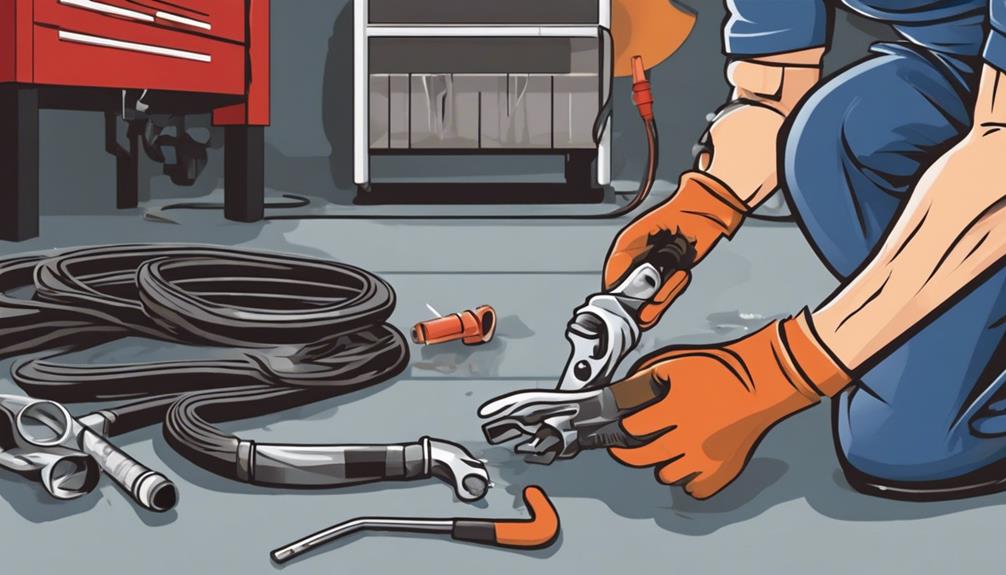
For ideal radiator performance, adhere to a regular maintenance schedule that includes flushing and replacing coolant every 30,000 miles. This essential step helps prevent overheating issues and maintains the efficiency of your cooling system.
Regular inspection of radiator hoses is also important to avoid coolant leaks and potential radiator repairs. Ensuring proper coolant levels is necessary for the effective functioning of the radiator, as it aids in heat dissipation.
Cleaning the radiator fins can enhance heat dissipation efficiency, extending the radiator's lifespan. Following manufacturer recommendations for radiator maintenance is key to preventing costly repairs and maintaining the best performance of your vehicle's cooling system.
Professional Radiator Repair Services Importance
Professional radiator repair services play an important role in ensuring the longevity and best performance of your vehicle's cooling system. Reputable technicians offer expert diagnosis and repairs, preventing potential engine damage due to radiator problems. Specialized equipment used by professional services ensures precise and efficient repairs, optimizing the cooling system function.
Here are three reasons why professional radiator repair services are pivotal:
- Prevent Engine Overheating: Proper diagnosis and repairs by experts can prevent engine overheating, which can lead to costly repairs and potential safety hazards.
- Ensure Vehicle Safety: Trusting professionals for radiator issues guarantees the safety and reliability of your vehicle, minimizing the risk of breakdowns or accidents.
- Optimize Cooling System Efficiency: Professional repairs maintain the integrity of the cooling system, reducing the likelihood of recurring issues and enhancing overall performance.
Choosing professional repair services guarantees that your radiator and cooling system receive the attention they need for optimal function and your vehicle's safety.
Radiator Hose Replacements: What to Know
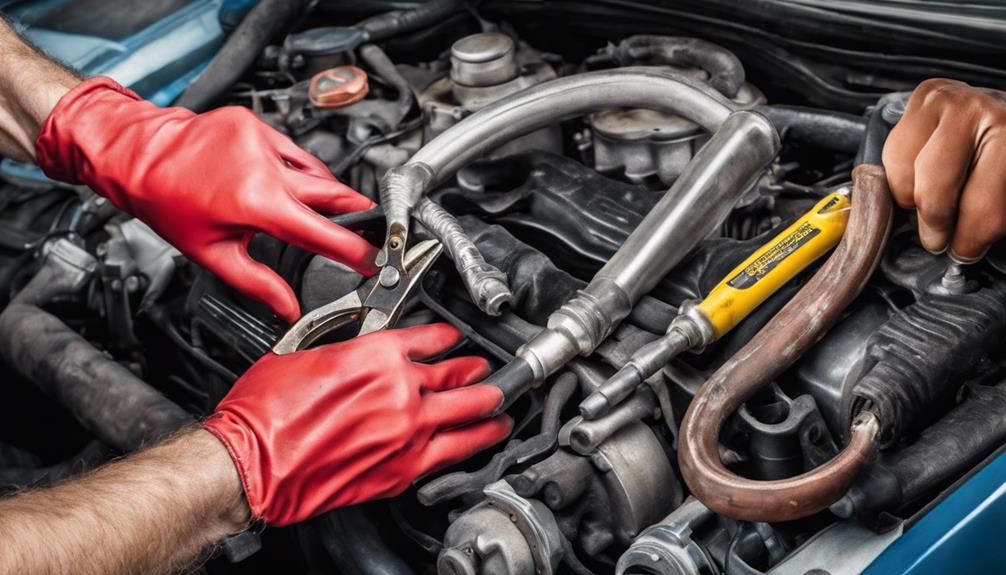
Consider replacing your radiator hoses every 4 years or 50,000-75,000 miles to prevent coolant leaks and engine damage.
The radiator hoses play a critical role in your vehicle's cooling system, carrying coolant to and from the engine. Over time, these hoses can deteriorate due to high engine heat and extreme temperatures, leading to potential issues.
When replacing radiator hoses, opt for durable silicone hoses known for their longevity. It's important to guarantee proper airflow within the cooling system to prevent overheating, as a faulty water pump or blocked radiator can impact the hoses' performance.
Both the upper radiator hose and lower radiator hose are susceptible to wear and tear, making regular inspection and maintenance essential. Professional installation of replacement hoses is recommended to guarantee a secure fit and avoid coolant leaks.
Frequently Asked Questions
What Is the Most Common Coolant Hose Failure?
The most common coolant hose failure stems from age-related deterioration. Hose material weakens over time due to temperature fluctuations and engine stress, leading to pressure changes. Regular maintenance, including hose inspection and timely coolant replacement, can prevent leaks and performance issues.
What Are Symptoms of a Bad Radiator Hose?
If you notice leaking coolant, swollen hoses, cracked rubber, or an overheating engine, it's time to check for a bad radiator hose. A collapsed hose, spongy texture, brittle material, puddle under car, steam from hood, or discolored hose can indicate trouble.
What Is a Common Radiator Problem?
If your car is overheating, experiencing coolant loss, or showing rust damage, you might have common radiator issues like leaks, blockages, or pressure buildup. Prompt radiator repairs can prevent further engine damage.
What Are the Three Main Causes of Radiator Failure?
When it comes to radiator failure, the three main culprits are corrosion buildup, pressure leaks, and overheating issues. Addressing these promptly can help prevent further damage and keep your cooling system running smoothly.
Conclusion
In the world of car maintenance, radiators and hoses are the unsung heroes keeping your engine cool. Just like a well-oiled machine, these components need care and attention to function smoothly.
Remember, neglecting them is like driving on a highway without brakes – a disaster waiting to happen. So, take the time to check, maintain, and repair your radiator and hoses to make sure a smooth ride ahead.
Your car will thank you for it.

